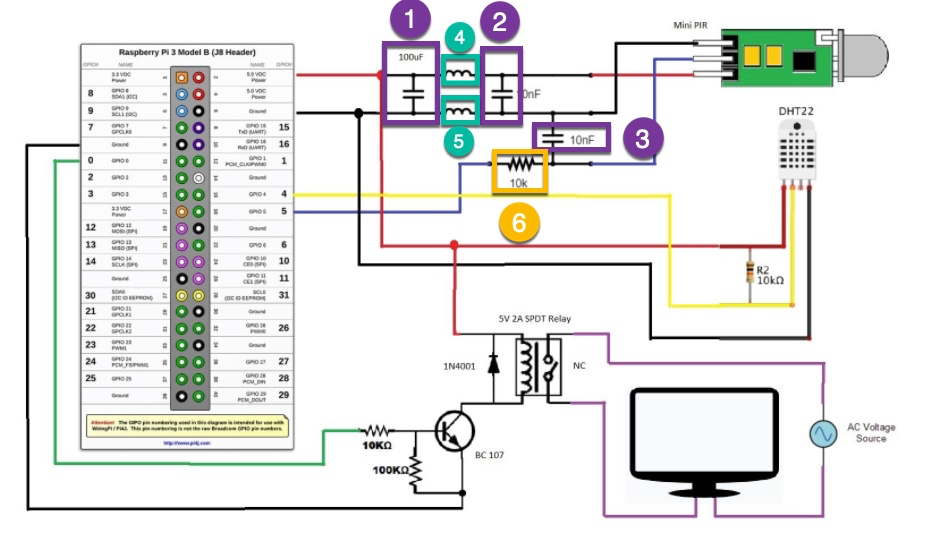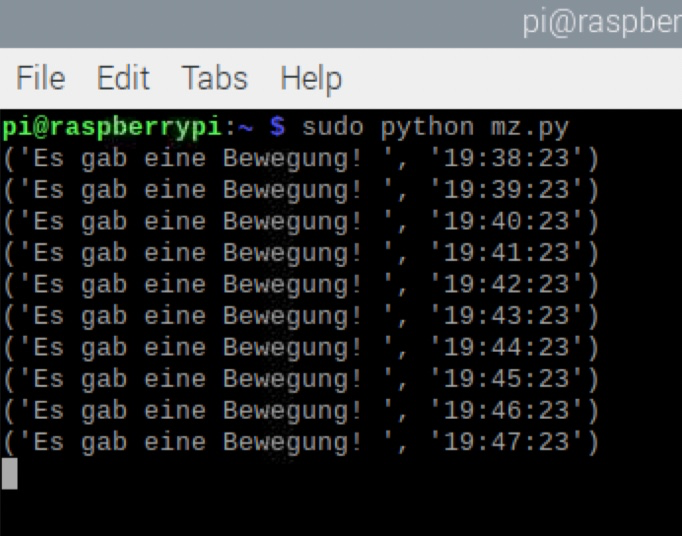Read the statement by Michael Teeuw here.
PIR Sensor: false positive detections
-
@fozi I also had false triggers. It turned out that my PIR was too close to my Pi and the WiFi chip induced EMF into the PIR. By moving the PIR further away and introducing a low pass filter i solved my issue. Have a look at my circuit and comments
https://forum.magicmirror.builders/topic/15458/smartmirror-dashboard
-
@zoltan Really nice build!Congrats!
Yeah, a low-pass filter can solve the interferences from the WiFi module, too, of course. But due to my lazyness and impatience I sacrificed an old VGA cable and re-used the ferrite bead:beaming_face_with_smiling_eyes: -
Hey folks - thanks for your answers. I decided to goahed with a RCWL-0516. But have the same issues. I’m testing the sensitivity with a python script. I also covered it in alu foil - no change. Now I ordered a ferrite beat and will add to the cables (around all of the them or only GND, 5v or Output?)
I’m also thinking about adding a low pass filter, but I have no experience with that. Where do I have to add that? GND & Output?
-
@mz-ber Just put all wires through the bead.
With the RCWL-0516 you should note that they can be very sensitive (up to 7m on free sight) and detect motion even through walls. First I went the alu foil route, too, but then modded my RCWL-0516 with a trimmer. Now the mirror is triggered when I approach the mirror less than 1m. Check the link in my signature for details, if you like. -
@fozi Yes! I followed your instructions in detail - that was very helpful. And yes, I noticed how sensitive it is. In your tutorial you removed the the tiny SMD resistor soldered and replaced that. What if I just remove it and not replace it. Is the range than completely gone and doesent work anymore?
-
Hi @zoltan - I was reviewing your tutorial. Really good documented. I have a question about the wiring drawing you shared. I’m new to it and dont understand everything. But I’m a fast learner :-)
In your drawing you added a couple of symbols. I guess these are resistors and filters, right?
Numbers 1, 2 and 3 look similar, only with a diffrent capacity. Is that a Capacitor?
What are 4 and 5? Is that a conductor? What capacity is here needed?
And number 6, not sure. Is that a RND or a resistor?
-
@mz-ber If you remove the resistor completely without any replacement the sensor won’t work any more.
-
Didn’t I said, I’m not an electrician?
It is not a step-down/up … it is called Pull-Up, resp Pull-Down.
Please see here for detailed (german) explanation: https://www.elektronik-kompendium.de/sites/raspberry-pi/2006051.htm -
@thgmirror Yep, that is what I’ll do next. Already ordered a starter kit with resistors, inductors and capacitors.
I also noticed, even if I added the ferrite beat, that the sensor recevied every minute excact on the second a signal

-
@thgmirror said in PIR Sensor: false positive detections:
It is not a step-down/up … it is called Pull-Up, resp Pull-Down.
Are you dealing with 3D printing? Just asking, because step-down converters are quite popular for modding cooling fans in that hobby :beaming_face_with_smiling_eyes:
